The story of Lambros Kaconis, Russian corsair
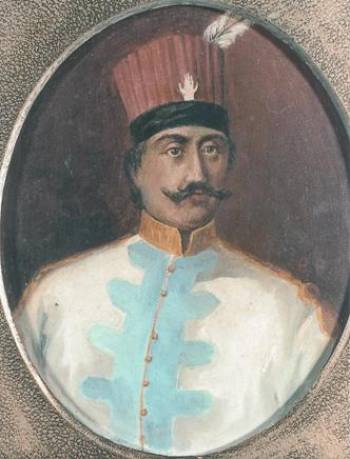
For a long time, the hope of liberation remained the value of completely undefined. Europe during the 16th – 17th centuries was not without difficulty restraining the onslaught of the Brilliant Ports, and the troublesome questions of organizing crusades with lofty goals were already firmly in the past. In the next, XVIII century, Russia becomes the main opponent of Istanbul, and in this factor the Greeks began to see for themselves a chance for deliverance. Many descendants of the glorious Greeks entered the Russian service as sailors, military and diplomats. Some managed to achieve a successful career.
One of such personalities was Colonel Lambros Katsonis, a participant in two Russian-Turkish wars (1768–1774 and 1787–1791), commander of the Russian privateer flotilla in the Mediterranean Sea, who has served in Russia for more than 35 years.
Youth, war, Crimea
In 1768, relations between Russia and Turkey began to be found out not by flowery phrases of diplomatic notes and letters, but with the help of steel and gunpowder. In order to maximally complicate the functioning of such a huge state as the Ottoman Empire and create an additional theater of military operations for it, the decision was already long ago discussed to send a strong squadron from the Baltic to the Mediterranean Sea having airborne troops on board. The immediate command was entrusted to Admiral Grigory Andreyevich Spiridov, and at the head of the entire enterprise Catherine II put Count Alexei Orlov.
The area of operation of the Russian squadron was the eastern Mediterranean, with an emphasis on the Archipelago, therefore it received the name Archipelago. In Petersburg, they were aware of the difficult situation there, the mood of the Greek population and its ardent attitude towards the Turkish authorities. The calculations that, when Spiridov’s ships appeared, the Greeks, in any case, a considerable part of them, would pass from a state of permanent silent hatred to armed activity, were not completely groundless. For future volunteers from among the local rebels in the holds of Russian ships there was a certain amount weapons.
In February 1770, the squadron Spiridov appeared off the coast of Greece. The calculations were correct, and local volunteers began to flock to the Russians in fairly large numbers. It should be noted that it was in the overwhelming number of people experienced. The descendants of the glorious Hellenes, perhaps, were not well versed in the writings of Socrates and Plato, obviously did not constitute experts on the works of Aeschylus and Aristophanes, but they had extensive experience and knowledge in matters of combat operations in coastal waters. And to put it bluntly, they knew a lot about robbery.
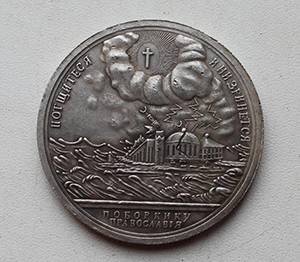
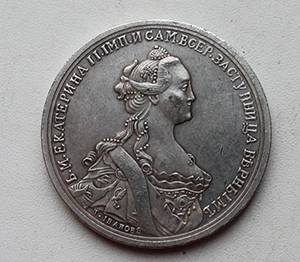
Despite its proximity to the center of the Ottoman Empire, Greece never belonged to the category of calm regions, and Turkish shipowners did not consider the waters surrounding the Peloponnese dangerous because of their suspiciousness. The Greeks and Albanians who flocked to the Main Peninsula, where the Russian ships stood, were good and brave fighters, who, however, lacked organization and discipline. Among others, 18-year-old youth Lambros Kaconis, a resident of the city of Levadia, located northwest of Athens, joined the volunteers.
Katsonis, despite his youth, already possessed some maritime experience, knew the location of many islands in the Aegean Sea abundant in them. Initially, he was identified as a sailor on one of the Russian ships. However, soon his brother, also a volunteer, died in a clash with the Turks. Katsonis asks the command to transfer him from ship to shore to the composition of the land contingent.
All the available forces of the Greek rebels, who, according to various sources, recited more than 8 thousands of people, received the name of the Spartan legions. There were two of them altogether: Eastern, under the command of Captain Barkov and Western, headed by Prince Dolgorukov. The core of each of these units was a small detachment of Russian soldiers. However, it soon became clear that warfare and hatred of the Turks alone were not enough for effective activity. In fact, the Greek troops were not only poorly organized and poorly disciplined, but also not always resistant in battle against units of the regular Turkish army.
These unfavorable qualities appeared among volunteers more than once - and especially during the unsuccessful siege of Modon fortress. When confronted with the Turkish troops arrived in time, the Greeks for the most part were put to flight. The Russian paratroopers, with heavy losses, managed to get through to the coast, leaving the enemy with almost all the artillery - more than 20 guns. After these failures, Count Orlov decided to leave Navarin occupied earlier and move the fighting to the Aegean Sea. Together with the Russian ships there followed a part of the Greeks. Lambros Katsonis, who, unlike many of his compatriots, was not timid in the matter, was noticed and received the rank of sergeant, also took part in the company on the islands of the Aegean Sea.
The anti-Turkish uprising on the Peloponnese lasted for some time after the departure of the Russian expeditionary forces from there, however, despite some successes, it was finally crushed by the forces of the regular Turkish army. The war with the Ottoman Empire ended with the signing of the Kyuchuk-Kaynardzhiysky world, the Archipelago expedition ended. Many Greeks - and the rebels, and especially those who entered the Russian service - were ordered home. Therefore, they were waiting for emigration. In September, 1774, Count Alexei Orlov, was visited by a deputation with a request to allow the Greeks, who expressed such a desire, to move to Russia with their families. In the same year, the “walkers” were sent directly to Petersburg, led by captain Stefan Mavromichali.
Ekaterina II, who sympathized with the Greeks, did not force herself to persuade for a long time and with a special rescript in March 1775 in the name of Count Alexei Orlov secured and affirmed the privileges of those Greeks who wished to move to Russia. This opportunity was used, according to various estimates, from 3 to 5 thousands of Greeks. Among those who decided to move to Russia, was Lambros Katsonis.
In 1775, a young man begins to serve in the Crimea, where a Greek armed contingent of newcomers is now housed in the former Turkish fortress Enikale. Sometimes, despite its small size, it was called the Greek army. Although the war with Turkey was already over, the Crimea, or rather the Crimean Khanate, remained a turbulent place. In Bakhchisarai, the active struggle of political groups that saw the future of this country in different ways continued. Turkish emissaries from Istanbul poured oil on them with a generous hand, reminding the Tatars who their real “father-benefactor” was.
After another family scandal, more like a medium-sized civil war, Shagin-Giray came to power in Crimea. Educated in Venice, who knew several foreign languages, did not neglect poetry and was known to be an expert on Western cultural values, this ruler began to implement reforms with a tough hand. These transformations were alien not only to the local nobility, who considered them a complete departure from the traditions that had been established for centuries. The events of Shagin-Girey were met with complete misunderstanding and alienation from the ordinary local population. “Looks like he sold himself to Russians,” they said in the markets.
In November, 1777, with the support of the broad masses of the conscious public and Turkish emissaries, a riot began in Crimea to overthrow Shagin-Giray. Fortunately for him, on the territory of the peninsula there was an almost 20-thousandth contingent of Russian troops, whose command in the person of Lieutenant-General Alexander Alexandrovich Prozorovsky did not completely understand the terms "neutrality" or "non-interference".
In the suppression of the rebellion, along with other parts and divisions, the Greek contingent of about 600 was active in numbers from Kerch. The overwhelming majority of these were veterans of the recent war, who had sufficient combat experience. Among others, Sergeant Lambros Katsonis fought in this small Greek army. The Greeks showed themselves well in the process of suppressing the rebellion, and especially acting in their familiar mountainous terrain. Major General Pavel Sergeevich Potemkin, second cousin of the all-powerful Catherine’s favorite, spoke very flatteringly about them. He spoke highly of their high fighting qualities during the cleansing of the mountains from the surviving troops of the insurgents. By the way, Pavel Sergeevich Potemkin was a general not a courtier, despite solid family ties. The direct participant of the Russian-Turkish war 1768 – 1774, he was waited by difficult service in the North Caucasus and participation in the war 1787 – 1791, where Potemkin was awarded the Order of St. George 2 degree for the assault of Izmail.
The Greek squadron and the commander-in-chief of the Russian troops in the Crimea, Lieutenant-General Alexander Prozorovsky, also positively described it. After the Crimea was to some extent pacified, the Greek squad returned to the point of permanent deployment in Kerch. His participation in recent events to restore order was noted in high reports and reports. For example, in a report addressed to the President of the Military Collegium of Prince Grigory Aleksandrovich Potemkin, Lambro Caccioni (as they would call this Greek in Russian documents) is mentioned, among others, with a request to submit this brave and skillful sergeant to an officer's rank. So the Greek youth who entered the Russian service, after 7 years, becomes an officer of the army of Her Imperial Majesty.
In August 1779, Catherine II approved the draft of the Military Collegium submitted by Prince Grigory Alexandrovich Potemkin. According to the project, a separate Greek regiment with more than 1700 people was to be formed from among the Greek emigrants, the core of which was to be a detachment stationed in Kerch. The main objectives of such a decision were not only the desire to reward and support those rebels who fought with the Russians in the Archipelago and then were forced to emigrate, but also to get a certain number of colonists to the Crimea and the southern provinces.
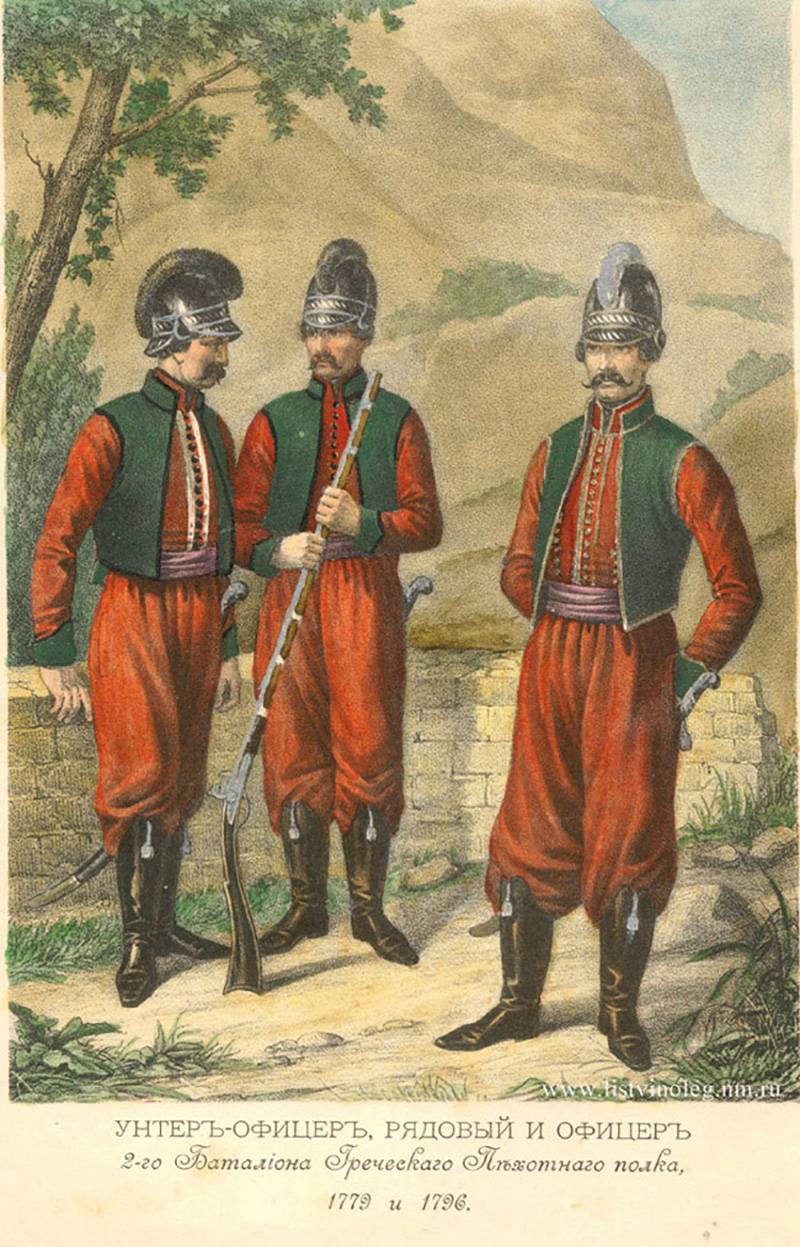
The formation of the regiment was assigned to Colonel Dimitrov, and Taganrog was chosen as the place for this. The fact is that not all the arriving Greeks found suitable conditions in Enikale-Kerch. The Turkish inheritance left much to be desired, and therefore, as far back as 1776, Prince Grigory Alexandrovich Potemkin offered a special appeal to the immigrants to those who wished to move to Taganrog. So by the beginning of the formation of the Greek regiment in this area already lived a lot of people from the Peloponnese.
The regiment was formed from 1779 to 1783. Due to the lack of personnel, instead of the planned 12 companies, only 8 was staffed. They received their own names: Spartan, Athenian, Macedonian, Corinthian and others. The total number of units by the end of the formation process did not exceed 850 people. The Greek regiment was listed as part of the irregular troops of the Russian Empire and was directly subordinate to the Novorossiysk governor-general.
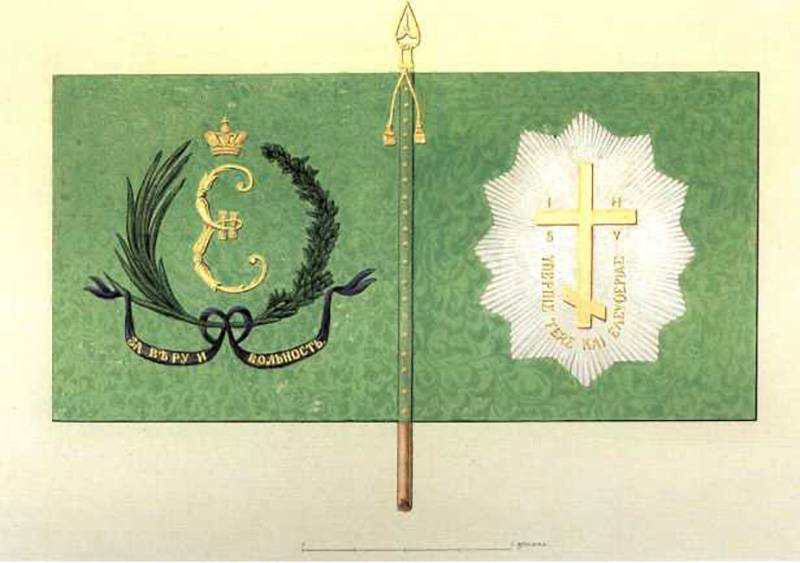
In 1783, the unit returns to Kerch just in time for the next “intra-state crisis”, or, more precisely, an internecine struggle for the warmest place in Bakhchisarai. The outcome of these events, the clouds of which again had to be dispersed by Russian bayonets and sabers, was the preservation of the tireless reformer Shagin-Girey, who, however, soon renounced the throne away from sin in favor of Russia.
The Greek regiment was transferred to Balaklava with the task of guarding the southern coast of Crimea, starting from this settlement and all the way to Kerch. In their spare time, the Greek settlers engaged in more peaceful occupations: viticulture, agriculture, and trade.
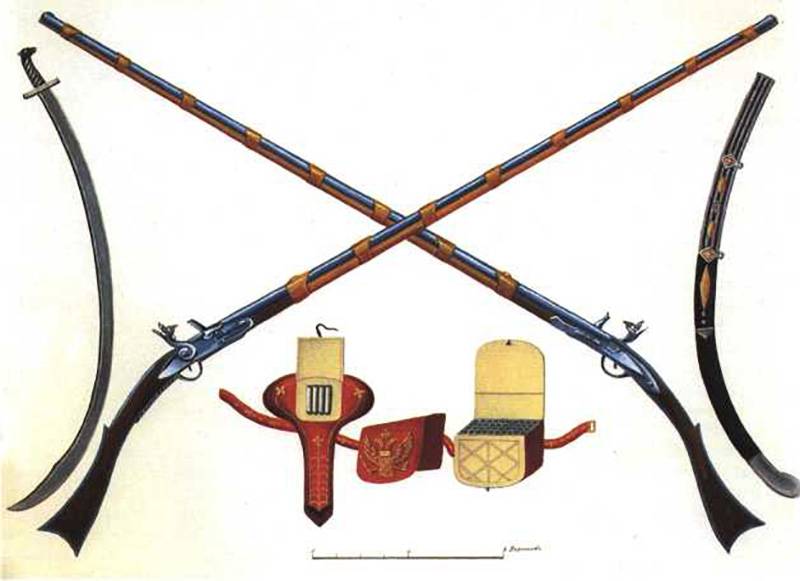
Lambros Kaconis took an active part in the formation of the regiment. For his experience and skills, he is distinguished from other officers. In 1781, Mr. Katsonis is assigned the rank of lieutenant - soon he had to leave the regiment, whose formation was not completed yet, to participate in one important military-diplomatic mission for Russia. Lieutenant Katsonis is placed at the disposal of Count Marko Voinovich, who was preparing, on the instructions of Empress Catherine II, to undertake an expedition to distant Persia.
Expedition to Persia
Since the time of Bekovich-Cherkassky’s tragic ending attempt to penetrate deep into Central Asia, Russia has not taken such foreign policy steps - things were more important. However, during the reign of Catherine II, the issue of establishing trade with the East became relevant again. At the very beginning of the reign of the young empress, a bold attempt to reach the Pacific Ocean and with it the countries rich there with various goods made captain-commander Chichagov. Then, in the 1765 – 1766 year, the Russian ships unsuccessfully fought with the Arctic ice, trying to get to the desired target through the Arctic Ocean. Mission Chichagova ended in failure.
Now, according to the plans of Catherine II and her entourage, it was necessary to try to get to the east from another, more traditional side - through the Caspian Sea and Persia. For this purpose it was necessary, firstly, to ensure the safety of Russian trade in the Caspian Sea and, secondly, by agreement with the Persian authorities, to establish a fortified outpost on the east coast. Since some of the respected Western partners (especially island partners) had their own, completely partner, views on Russian activity in the Middle East, the expedition was being prepared in complete secrecy.
Preparatory activities began as early as 1780. In Astrakhan, in secrecy, the equipment of three frigates and one bombing ship began. For transportation of all necessary four more vessels were allocated. Initially, they planned to appoint Alexander Vasilyevich Suvorov as the head of the company, but then they beat him. In June, a young lieutenant commander Count Marko Voinovich arrived in Astrakhan on 1781. A native of Montenegro, Count Voinovich volunteered for the Russian service, for bravery was awarded and appointed commander of the frigate "Glory". For the differences in hostilities was awarded the Order of St. George 4-th degree. He was put at the head of the expedition.
Before Voinovich there were difficult, but quite achievable goals. No one demanded that the count return to Petersburg on an Indian elephant, behind which bronze-skinned porters in turbans would drag bags of pepper and nutmeg. The Count was ordered to reach an agreement with the Shah of Persia on the establishment of a Russian trading colony on the eastern shore of the Caspian Sea.
Voinovich scrupulously approached the cadre, carefully selecting people. Many members of the expedition he knew in the service in the Mediterranean. Among the selected people was Lambros Katsonis, who in 1781, leaving the Crimea, arrived in Astrakhan. Russian ships were ready. Among other things, those who are supposed to have dispersed an informational masking noise, according to which Voinovich was only to punish the Derbent and Baku khans for frankly predatory habits.
8 July 1781, the Voinovich squadron left Astrakhan and headed south. Swimming in the Caspian Sea lasted more than three weeks. The Derbent and Baku Khanates remained aft, the time of which has not yet come. July 26 ships anchored in Astrabad Gulf, which played a significant role in trade with the East. Here came the caravan routes that went deep into Persia and Central Asia. It is worth noting that the Astrabad and Mazandaran regions were redeployed to Russia under the 1723 agreement of the year, but were not occupied by the Russian troops. Under the 1732 agreement, these territories were returned to the Shah of Persia.
The first part of the operation was successfully carried out by Voinovich, now it remains only to “persuade the Shah”. But with this just were quite serious problems, due to the complete absence of the Persian ruler. The thing is that at the moment in this state there was a process that was fascinating for the main participants and bloody for all the others - a process called “armed struggle for power”, or, quite simply, civil strife, the main prize of which was the Persian throne shahs. Astrabad Aga-Mohammed Khan from the Qajar dynasty came closest to the cherished goal.
By the time of the arrival of Voinovich’s ships, Aga-Mohammed took control of a number of cities and was very close to receiving a large prize, which he would get in a few years. Since the khan was the supreme and sole authority in the region, negotiations were conducted with him.
Voinovich asked to give the Russian side a small plot of land or an island to build a trading post. Aga-Mohammed very kindly accepted the officer sent to him and gave the go-ahead to build a settlement in the Tract of the Urban Settlement on the shore of the Gulf of Astrabad, by the way, not far from the place where Stepan Razin had built in 1668. The khan's courtesy stretched so widely that he commanded to allocate digging workers to help the Russians.
Voinovich immediately gave the order to start work that was carried out quickly and without unnecessary red tape. Under the pretext of protection against attacks by hostile tribes, primarily Turkmen, a retractor was dug, on which ship guns 18 transported to shore were installed. The Persians did not interfere with the construction of fortifications, and even treated with understanding, as they themselves suffered from the regular raids of nomadic tribes.
And everything would be fine if in the fall of 1781 of the year the Aga-Mohammed political rating did not fall - Rasht and several other cities had left his troops. In the current depressing circumstances, many rulers become suspicious. Aga-Mohammed was no exception. The East is a delicate and insidious affair, although in fairness it should be noted that in the Western countries Their Majesties regularly passed into another world with the help of faithful servants to the master of citizens.
One way or another, Aga-Mohammed began to perceive Voinovich as a threat. Say, he is sitting in his fort and is plotting evil. A perfidious plan was developed, the purpose of which is to capture the Russian commander and force him to give the order to his people to go home. 15 December 1781, Count Voinovich and his officers were invited to visit the Astrabad governor. The captain-lieutenant was accompanied by the commanders of the ships, the Persians were very kind. No one expected that the events would soon take a slightly different, not at all hospitable, turn.
The first signs of departure from the protocol were seen by Russians in a city where an increased number of troops was observed. Guests, however, explained that the exercises are held. After a dinner party at the house of the governor, Voinovich and his officers began to say goodbye to the owner, when he, in a rush of hospitality, told them that, by order of the khan, they had all been arrested. Pads were put on prisoners and put in jail. On the sly, the Persians decided to attack the trans-detachment, but were repulsed with heavy losses.
The governor began to demand from Voinovich to give the order to dismantle all the buildings and fortifications and return to the ships. Only after this, the prisoners, who were otherwise threatened with all unthinkable tortures, will be released. The count responded with a categorical refusal, arguing that, according to Russian law, a prisoner officer could not issue orders. He proposed to the Persians to release one of the senior officers who could get to the squadron and give orders. After long hesitations, the Persians freed captain-lieutenant Baskakov, who freely reached the ships. When the guns were transported to the squadron, and the buildings were destroyed, the Persian side freed the captives.
Aga-Mohammed, however, soon repented of the lawlessness he had committed, writing a colorful letter, like a Persian carpet, suggesting a place for a new colony and trying to turn the situation into some sort of misunderstanding. Voinovich did not want to do anything with Khan. Persisting, he sent an entire embassy to St. Petersburg with the rich gifts of Catherine II. However, the empress, who was already in the know of Persian "tricks", did not even deign ambassadors to ambassadors.
The Russian squadron was on the raid until July 8 1782, after which, lifting anchors, went to the north. On the way, Voinovich went to Baku, where the local khan, out of harm's way, met the guests with fireworks and behaved extremely peacefully. Upon return, the expedition members were treated and rewarded. Voinovich received the rank of captain of the 1 rank and a diamond ring. Nor was Lambros Kaconis forgotten. By a decree of February 25 of 1785, "the lieutenant of the Albanian team Kachonin was granted a five hundred eighty rubles worth of 200 red award." In April of the same year, the Russian nobility were granted to Lambros Katsonis for his services to Russia.
A new Russian-Turkish war was approaching, in which this native of Greece would gain fame by commanding the Russian marque flotilla on the Mediterranean.
To be continued ...
Information